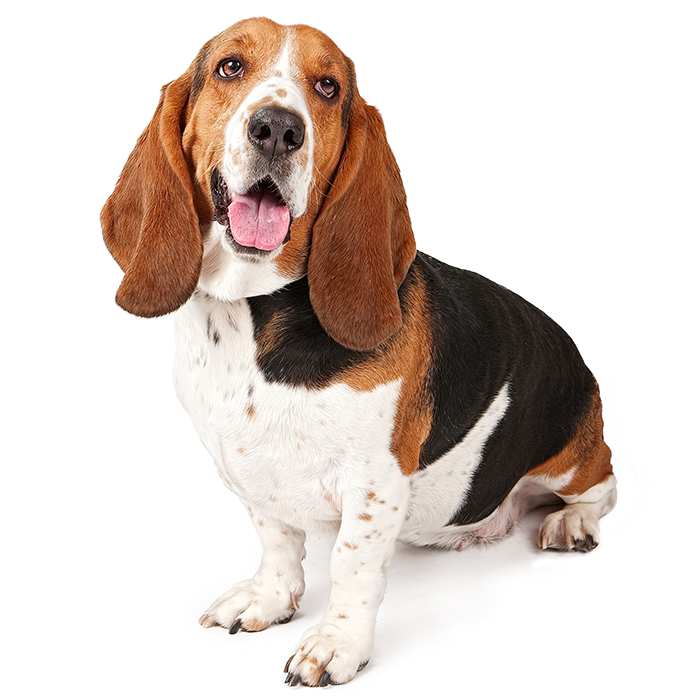Border Terrier


| Recommended for | Active families |
| Breed Classification | Terrier group |
| Other names | Borders |
| Lifespan | 12-15 years |
| Size | Small |
| Temperament | Affectionate, plucky, good natured |
| Intelligence | Above average |
| Tendency to bark | Moderate |
| Maintenance Level | Medium |
| Health Risk | This breed is in the lower risk category for developing health issues, hence it is one of the least expensive breeds to insure. |
Insuring a Border Terrier?
Get award-winning cover with more benefits and up to 80% of eligible vet bills reimbursed. Find out about your cover options.
Get a quick quote
Is this breed right for you?
Try our breed selector quiz to find out your best matching breed!
Insuring a Border Terrier?
Get award-winning cover with more benefits and up to 80% of eligible vet bills reimbursed. Find out about your cover options.
Get a quick quote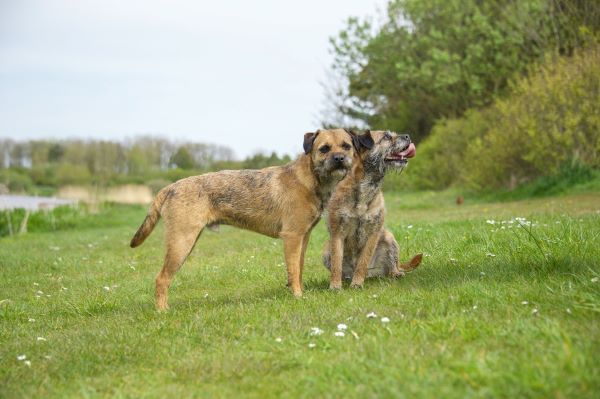
Breed history of Border Terriers
The Border Terrier originated in the rugged country between Northeast England and Scotland during the 18th century (which explains their name) and is related to other terriers from the same region including the Bedlington Terrier and the Dandie Dinmont Terrier.
They were bred to drive foxes out of their dens and into the open for the Foxhounds to chase, requiring sufficient energy to keep up with the horses and larger dogs. They also had to be small enough to dig into the fox’s lair and force it into the open. Borderland foxhunts were not the grand, sporting affairs of British nobility, but the practical working-class job of protecting shepherds’ flocks from predators, hence the breed’s reputation as a tough, no-frills working terrier.
There were reports of Border Terriers in Australia during the 1930’s but no records or details were kept. Mrs. Russell from Melbourne was the first recorded Border Terrier owner in Australia during the 1940s, while the first New South Wales Border Terrier was owned by Mr George Sheaves in the 1960s. Today the breed is found in all states of Australia and there is a breed club in NSW.

Physical description of Border Terriers
The diminutive but solid Border Terrier has a short and dense undercoat with a wiry top coat. The water repelling coat is designed to keep the dog warm in cold climates.
The coat comes in a variety of colours including red, blue, tan, wheaten, grizzle and tan, blue and tan. Some have a white patch on their chest. Their wiry, scrappy coat has led to the Border being described as looking a lot like a junk yard dog.
The Border’s skin is quite loose and it can be lifted from their body to protect it from bites, which was very useful when these dogs were used for fox hunting.
They are easy to recognize among other small terriers because of their unique head shape – an ‘otter head,’ as fanciers say. Another distinguishing trait is that they have longer legs than other small terriers.
| Weight range | 5 to 7 kg |
| Height range | Male 33 to 41 cm, female 28 to 36 cm |
| Colours | Blue & tan, grizzle & tan, red, wheaten |
| Coat length | Short |
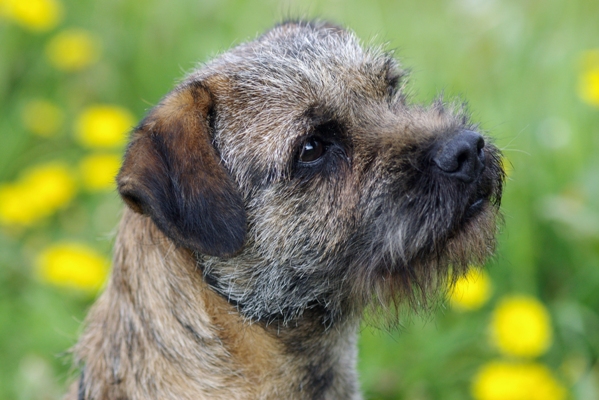
Border Terrier personality and temperament
The alert, good-natured Border Terrier makes a great family member that adores their humans and enjoys family life. Despite being described as ‘hard as nails’ when working, at home they’re typically good-tempered, affectionate and trainable.
However, Border Terriers come with a caveat: they still have a powerful drive to hunt and dig, as well as the energy and stamina that enabled them to keep up with the horses and hounds on the hunt. These characteristics can be too much to manage for some people. But for others, Border Terriers are wonderful, high-energy companions who play hard and love harder.
Give the Border Terrier plenty of physical activity, and you’ll have a loyal and affectionate best buddy for life. They can adapt to apartment life, so long as they get plenty of exercise. A well-exercised Border will make for a calm family member inside the house, and will also help to keep the neighbours happy and your yard free of holes.
Border Terriers need a securely fenced yard to keep them safe. Excellent escape artists, they’ll dig under or climb over fences to go exploring. A Border who remains alone for long periods will become bored, noisy and destructive; this is not a dog that should be left out in the yard all day.
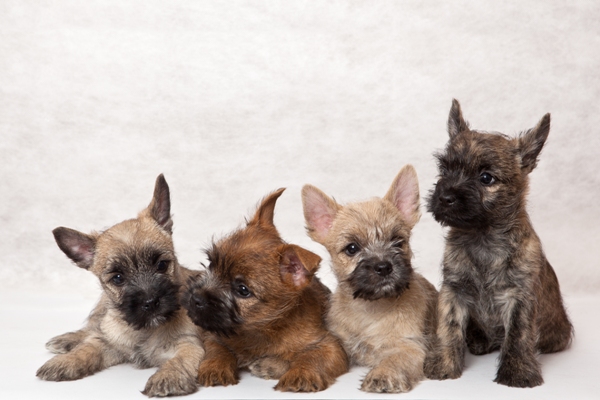
Border Terriers with kids and other pets
Borders are excellent with kids – they make great childhood playmates and are energetic companions for young children.
They get on well with other dogs if they are introduced to them from an early age. They particularly enjoy the company of a dog of the opposite sex, which is something to take into consideration if you are bringing another dog into the home.
Their hunting instincts can be aroused by cats and other small animals and they may chase after them when outside.
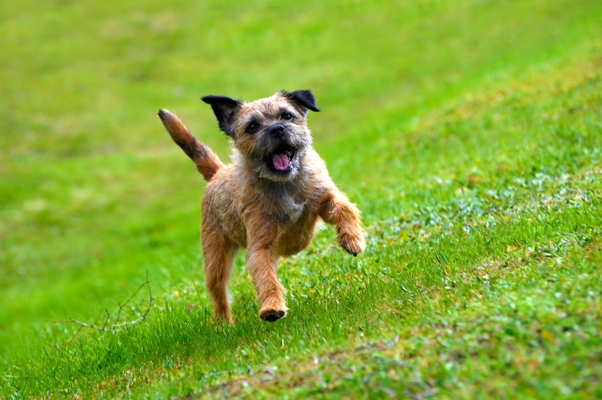
Border Terrier training and exercise
Bred to be country dogs, Border Terriers are best suited to active families who can give them plenty of daily exercise and prevent them from practicing their escape-artist skills. To keep your Border happy and in good physical condition, at least half an hour per day of vigorous exercise is recommended. A brisk daily walk or vigorous play session with a ball or flying disc should do the trick. Borders also enjoy participating in tracking, lure coursing, agility and flyball.
Early training and socialisation is recommended, especially if you want to avoid them chasing and hunting down any small animals. Because of their instinct to chase, it is advisable that a Border Terrier is always be walked on a leash, and that play sessions take place inside a fenced-in yard or other secure area.
The Border Terrier is quite easy to train and with regular and steady obedience training will result in a well-rounded dog. As terriers, they do have a mind of their own but with consistent training they will follow basic commands.
| Energy level | High |
| Exercise requirements | High |
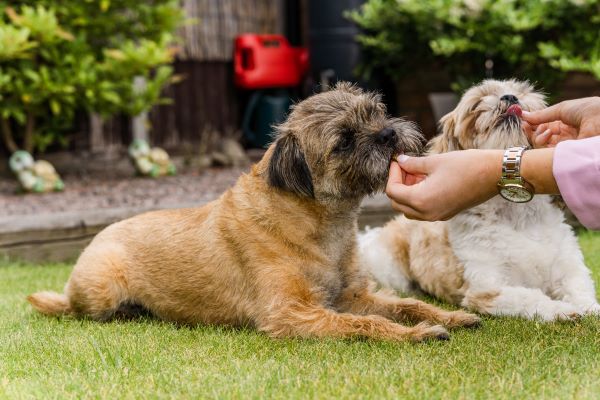
Border Terrier feeding and nutrition
Border Terriers require a good quality, complete, balanced dog food that is suited to their age, size and activity level in order to keep them slim and healthy. This breed can become overweight easily, so be sure to measure your Border’s food and to engage in at least a half hour of vigorous exercise each day.
If you have any concerns about your dog’s diet or weight, please consult your vet, who will be able to tell you how much your Border Terrier should be eating.
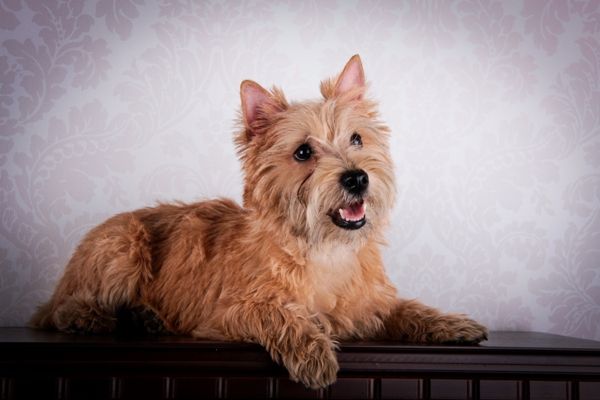
Border Terrier care and grooming
The Border Terrier’s thick, wiry double-coat doesn’t require much grooming, just a trim once or twice a year. The Border doesn’t shed a lot and most of the time, a quick brushing every week or two is enough to keep the coat in good shape, although more attention is required during seasonal shedding periods.
The Border’s outer coat repels dirt, but this can be compromised by too-frequent bathing. Usually a dirty Border Terrier can be cleaned up with a towel and a brush.
Health issues for Border Terriers
- Patella luxation is caused either by a deformity or trauma, which results in frequent dislocation of the patella in the knee, locking the leg. It causes pain and can be crippling, but many dogs lead relatively normal lives.
- Hip dysplasia is a condition where the thighbone and hip joint do not fit together properly, causing pain and lameness. Less severe cases can be treated with anti-inflammatory medications, but surgery may be required for serious cases.

- Pulmonic stenosis is caused by improper flow of blood through the heart due to a weak or malformed pulmonic valve, leading the heart to have to work harder in order to pump blood. This can lead to enlargement of the heart and possibly heart failure. Less serious cases may not require treatment, but surgery is recommended for severe cases.
- Hypothyroidism occurs when the thyroid gland does not produce enough of the thyroid hormone. Symptoms include epilepsy, loss of hair, fatigue and patchy skin. It is treatable with medication and a special diet.
- Cryptorchidism is a condition where one or both of the testicles fail to descent. Both descended and undescended testicles can be removed through neutering.
Not all conditions are covered by Pet Insurance. For details of Bow Wow Meow Pet Insurance cover, refer to the Product Disclosure Statement.
Free engraved pet ID tag on sign up3
Customer Satisfaction
21 day cooling off
Life-long cover4



